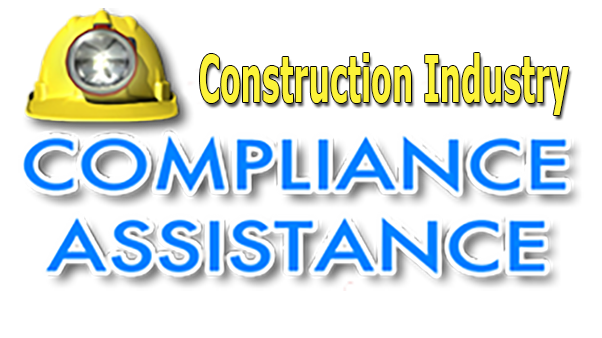
Lead Renovation, Repair and Painting (RRP) Rule and Lead Abatement Activities Updates
The Lead Renovation, Repair and Painting Rule has been in effect since 2008. It applies to home improvement contractors and building maintenance professionals who perform work for compensation that disturbs lead-based paint in homes or child-occupied facilities built before 1978. Contractors must comply with a set of rules including obtaining certifications, abiding by work practices, and recordkeeping (see CICA for details). RRP projects are typically performed at the option of the property owner for aesthetic or other reasons, or as an interim control to minimize lead hazards. It is NOT designed to permanently eliminate lead-based paint hazards.
Lead abatement projects are designed to permanently eliminate existing lead-based paint hazards. They may be ordered by a state or local government in response to a lead-poisoned child or other reason or may be undertaken voluntarily at any time. Lead-based activities are regulated differently than renovation, repair and painting jobs, even though, in some cases, the activities are similar (see CICA for details).
CICA Center has several important messages for businesses involved in home improvement and lead abatement, as well as the public.
-
Make America Healthy Again. On February 13, 2025, President Trump issued Executive Order (EO) 14212: Establishing the President's Make America Healthy Again Commission, to improve the health of Americans, particularly children. This new EO contains provisions that complement the President's Task Force on Environmental Health Risks and Safety Risks to Children's establishing text, EO 13045: Protection of Children from Environmental Health Risks and Safety Risks. Both EOs seek to address environmental factors contributing to chronic diseases and other health impacts in children. EO 13045 directs that "each Federal agency: shall make it a high priority to identify and assess environmental health risks and safety risks that may disproportionately affect children; and shall ensure that its policies, programs, activities, and standards address disproportionate risks to children that result from environmental health risks or safety risks."
-
EPA Strengthens Lead Paint Standards to Protect Against Childhood Lead Exposure. On October 24, 2024, EPA announced final standards to strengthen requirements for the removal of lead-based paint hazards in pre-1978 buildings and child care facilities, known as abatement activities, to better protect children and communities from the harmful effects of exposure to dust generated from lead paint. Aligning with the Federal Action Plan on reducing lead exposure to children, these stronger standards would go further to protect children from the dangers of lead exposure.
-
Enforcement of the rules has been enhanced. Judging from EPA 2024/2025 news releases, enforcement of lead-based paint rules remains a priority at EPA. Examples of recent enforcement actions include: Connecticut Firm to Implement Actions to Protect Residents from Lead Paint Exposure Risks (2/20/2025), EPA Penalizes Four Missouri Home Renovators for Lead-Based Paint Violations (1/7/2025), EPA Fines Leavenworth Military Housing Renovator for Alleged Lead-Based Paint Violations (10/21/2024), EPA fines construction firm for alleged violations of federal lead-based paint rule (7/17/2024), EPA Penalizes St. Louis Area Home Renovators for Lead-Based Paint Violations (6/18/2024).
-
The definition of dust-lead hazard standards (DLHS) and dust-lead clearance levels (DLCL) have changed. EPA's dust-lead hazard standards (DLHS) provide the basis for risk assessors to determine whether dust-lead hazards are present during a risk assessment or a lead hazard screen in pre-1978 homes and childcare facilities. Dust-lead clearance levels (DLCL) are used to evaluate the effectiveness of post abatement cleaning and will reduce dust-lead related risks to children in pre-1978 homes and childcare facilities (where lead abatement activities take place). To achieve clearance when dust sampling is required, values below those levels must be achieved.
EPA first established dust-lead hazard standards (DLHS) and dust-lead clearance levels (DLCL) in 2001 under sections 401, 402, and 403 of the Toxic Substances Control Act (TSCA). In January 2021, EPA finalized a rule that lowered the DLCL to 10 μg/ft² for floors, 100 μg/ft² for window sills. DLCL for window troughs remained the same at 400 μg/ft². The new clearance levels became effective March 8, 2021. -
Contacts in EPA Regional Offices for Lead-based Paint Exposure Prevention Efforts. EPA maintains ten regional offices to implement federal environmental programs around the country. Within each region, a Regional Lead Contact oversees the implementation of lead-based paint exposure prevention efforts. Click on your region in the map on this webpage for your Regional Lead Contact's information.
-
National Lead Poisoning Week, October 19 – 25, 2025. NLPPW is a call to bring together individuals, organizations, industry, and Tribal, state and local governments to reduce childhood exposure to lead by increasing lead poisoning prevention awareness.
